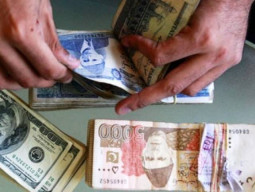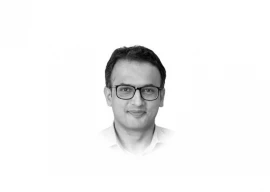
Migrations of people into the country and from the country to the world outside have been enormously important in shaping Pakistan’s history. They determined how Pakistan views it neighbours, particularly India and Afghanistan. They brought extremism and contributed to the development of a large middle class. They contributed to the country’s rapid urbanisation. They provided scarce foreign exchange to the capital-starved state. They also changed the structure of the economy.
These past movements took three directions. A very large number of people came in from the outside. The country was born in the midst of a demographic convulsion. As many as eight million Muslims left the newly-independent India and headed for the newly-born Pakistan. Six million Hindus and Sikhs moved in the opposite direction. A smaller, but still a significantly large number of people left the country and settled abroad. Millions of people moved within the country. Some of them went looking for work. Others were forced out by natural or man-made disasters. The country is currently dealing with the displacement of half a million people from North Waziristan as a result of Operation Zarb-e-Azb.
No firm estimates are available for the number of people involved in these movements so we will have to do with guesstimates. Of Pakistan’s current population of almost 200 million, a third are refugees or their descendants. Their number is probably 60 million. This is by far the highest concentration of refugees in the population of a country comparable to Pakistan’s size. The largest component of this group came from India during Partition; of the eight million Muslim refugees who came to Pakistan, some 5.5 million settled in Punjab. Many of them were accommodated on the properties left by the Hindus and Sikhs. This group was quickly absorbed since they were ethnically similar to those who lived in this area. They also spoke the same language. The descendants of this group now number about 35 million.
For most of the remaining 25 million, assimilation was much harder. This is not a homogenous group. It includes the descendants of the refugees from India, those who came later from Bangladesh when that country became independent in 1971, and those who were displaced by natural disasters and other crises. The refugees who came to Pakistan from the Muslim-minority provinces of British India such as Uttar Pradesh, Madhya Pradesh, Bihar, Delhi, Bombay, and Gujarat still stand out as a separate community. Their effort to get accommodated created ethnic tensions and associated violence in the country, particularly in Karachi. This composite group now numbers about 15 million, of which about 12 million live in Karachi. The remaining are scattered in other parts of urban Pakistan, mostly in the larger cities of southern Sindh. Of this group, those who call themselves muhajirs number about eight to nine million.
The second large-scale movement of people involved job seekers. About 10 million people were involved in this movement. A significant number of these went to Karachi. Some of those who came from Punjab returned home as the pace of economic growth picked up in the province, particularly during the presidency of Ayub Khan. The Pakhtun population stayed, locating itself in the bastis founded on Karachi’s periphery. Once opportunities in the construction industry declined, many of them took up jobs or established businesses in transport and other parts of the service sector. The current size of this population is about three million.
Once the Pakhtun areas became established in the city, they attracted the Pakhtun populations displaced by the two wars in Afghanistan. This movement of people probably added another two million, bringing the total to five million. This is equivalent to one-fourth of Karachi’s population.
To summarise this arithmetic: 60 million economic and political refugees in Pakistan are divided into four fairly distinct, but large groups and each of these four groups has shaped Pakistan’s history in different ways.
Published in The Express Tribune, July 7th, 2014.
Like Opinion & Editorial on Facebook, follow @ETOpEd on Twitter to receive all updates on all our daily pieces.
COMMENTS (16)
Comments are moderated and generally will be posted if they are on-topic and not abusive.
For more information, please see our Comments FAQ















































@fus: Lahore has a mix of all ethnicities and they are homogenous there compared to Karachi. Peshawar also used to have a mix of all ethnicities but that changed with the arrival of Afghan refugees in the 80s.
@Dipak- Do some research and then complain? Punjab has huge migrant population but most of them are ethinically Punjabi since they moved from Eastern Punjab and they took the land or train route. You have people settled all the way to Multan and other city of southern Punjab. Many people even settled in Quetta and NWFP, now KPK, there was big population in Campbellpur now Attock. In Karachi many people first came through the ships in 1947 and 1948, then in 1950s. The Karachi was the Capital and obvious choice for many govt. o, bureacreates and other educated class. Even in Sind, the migrant were not only settled in Karachi alson, but Sukkur, Hyderabad, Nawabshah, Tando Admam, MirpurKhas and they live there even now. The fact that we did not develop other cities for longtime Karahci has born all the brunt and has continued to provide food and shleter for people of all over Pakistan even though thanks to regional biases and descrimination Karachi people of Karachi has suffered. Except fo Karachi or Hyderabad which other city has huge population that can reperesent "well" with huge populeation of all ethnicties, sect and religion.
Dipak@Malveros: Short vision of Liyaquat Ali who thought Jinnah's Karachi will be the focal point of Pakistan and ignoring Lahore and Punjab. That move backfired. Karachi is now the most dangerous city in Pakistan full of ethnic violence.
An article should be written on why Muhajirs from UP/MP/CP and Bihar were brought solely to Karachi and settled there by Liaqat Ali Khan. Why were they not dispersed and settled all over Pakistan ?
Dipak@mirpuri: Congratulations for reducing poverty by shifting more people to UK. Build more dams and send more people to UK. That will result in less people with more water and more electric power. Win Win and more Win.
there was the man made disaster of mangla dam which forced nearly a million people from the mirpur region to shift to the UK.
History usually means His+Story to me. Think, this is pretty creative with both facts and inferences/deduction...
@raw is war: That is because Muslims who voted and created Pakistan refused to migrate after partition and also Nehru forced muslims also not to leave by liaquat nehru pact. Many Indian Musllims dont know exactly where they belong but they are sure that they don't like secular constitution.
@Np: You are right but after partition neither hindus have any legal rights to stay in Pakistan nor Muslims (baring those who move to India or fought for secular India in Independence) in India. Also it shows that Pakistani Muslims were more secular at that time as they allowed Muslim to stay with Hindus dominated area whereas same thing was opposed by Nehru and Nehru created ghettos for Muslims and left migrated hindus on their fate.
India's population density is much higher than Pakistan's. Pakistan is a very fertile land too. India also carries a burden of 200 million Muslims (mostly contribute nothing) who were supposed to have gone to Pakistan but stayed back in India. Be happy. India has much worse problems than Pakistan.
How have they shaped pakistan's history? was looking for an analysis not a report of statistics.
What is the point in writing this kind of article. It does not help but to divide the people. Musharaf would not have gone to Pakistan, had it not been for his parents. If India takes Pakistanis back, almost 190 million people will literally run to India.
The problem with the newer IDPs is that eventually they are going to make a beeline for a city like Karachi which is already facing a major law and order situation. This could be a powder-keg waiting to explode. Also it does not require much imagination to surmise that some TTP and Al Qaeda sympathizers would make their way with the IDPs.
What confounds matters is that there seems to be no semblance of a plan, whether it be with the operation, whether the political leadership is on-board, support from the Afghan side/ISAF or compensation and resettlement of IDPs. Nobody even knows whether this operation targets both the good Taliban and bad Taliban as well as the associated terror network. The anti-India groups and operatives operate out of PoK and Punjab and it appears that they may be left untouched. Given the lack of a clear direction in any of these matters, Pakistan may be escalating the conflict rather than solving it.
Strange way of looking at your countrymen. I don't think anyone in India refers to the significant Punjabi population in Delhi or Sindhi population Bombay as refugees, even though it is well-known that most of them came over during partition; of course, most of those that came during partition worked hard to regain what they lost and many are quite successful today, and I think this is a critical factor. Of course, they did not have to drop their unique culture or language either - that is never a requirement in India.
interesting article..
Ummm, the Hindus and Sikhs did not leave on their own volition. They were forced out by Liaqat Ali Khan to make way for fellow mohajirs like him.
Afyer all, there was a reason for mohajirs to mobe- they were going to a country that was newly created for them. There was no reason for Hindus and Sikhs from Karachi to leave the land of their forefathers. They were forced out against their will. They did not leave willingly.